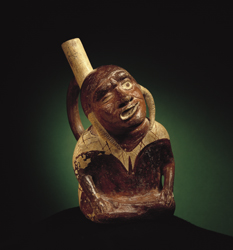Facial nerve paralysis
Editor-In-Chief: Prab R Tumpati, MD
Obesity, Sleep & Internal medicine
Founder, WikiMD Wellnesspedia &
W8MD medical weight loss NYC and sleep center NYC
| Facial nerve paralysis | |
|---|---|

| |
| Synonyms | N/A |
| Pronounce | N/A |
| Specialty | N/A |
| Symptoms | Facial droop, inability to close the eye, loss of facial expression |
| Complications | Corneal ulcer, synkinesis, facial muscle atrophy |
| Onset | Sudden or gradual |
| Duration | Varies, can be temporary or permanent |
| Types | N/A |
| Causes | Bell's palsy, trauma, infection, tumor, stroke |
| Risks | Diabetes, hypertension, pregnancy, upper respiratory infection |
| Diagnosis | Clinical examination, electromyography, imaging studies |
| Differential diagnosis | Stroke, Ramsay Hunt syndrome, Lyme disease |
| Prevention | N/A |
| Treatment | Corticosteroids, antiviral drugs, physical therapy, surgery |
| Medication | N/A |
| Prognosis | Generally good, but depends on cause and severity |
| Frequency | Common |
| Deaths | N/A |
Facial Nerve Paralysis[edit | edit source]
Introduction[edit | edit source]
Facial Nerve Paralysis is a condition characterized by the loss of facial movement due to nerve damage. It affects structures innervated by the facial nerve, which controls muscles on one side of the face, enabling individuals to express emotions, blink, and control facial movements. The most common form of facial nerve paralysis is Bell's palsy, a condition with an unknown cause that is typically diagnosed after excluding other serious causes.
Anatomy of the Facial Nerve[edit | edit source]
The facial nerve, or cranial nerve VII, has a complex pathway starting from the brainstem, traversing through the temporal bone, and branching out to the muscles of facial expression. It is responsible for carrying nerve impulses to muscles of the face and relaying sensory information from the taste buds of the anterior two-thirds of the tongue.
Causes[edit | edit source]
Facial nerve paralysis can result from various causes, including:
- Infections: Viral infections like herpes simplex can lead to Bell's palsy.
- Trauma: Physical injury to the face or skull can damage the facial nerve.
- Neoplasms: Tumors in the brain or along the nerve pathway.
- Neurological disorders: Conditions such as multiple sclerosis.
- Iatrogenic causes: Damage during medical or surgical procedures.
Symptoms[edit | edit source]
Symptoms of facial nerve paralysis include:
- Inability to move the face on the affected side, including blinking and smiling.
- Drooping of the mouth or eyelid.
- Loss of taste sensation.
- Increased sensitivity to sound in one ear.
- Dry eye or mouth.
Diagnosis[edit | edit source]
Diagnosis of facial nerve paralysis involves:
- Clinical examination to assess the extent of nerve involvement.
- Imaging tests like MRI or CT scans to identify the cause.
- Electromyography (EMG) to evaluate muscle activity.
- Blood tests to rule out infections or other systemic causes.
Treatment[edit | edit source]
Treatment options vary depending on the underlying cause and may include:
- Corticosteroids to reduce inflammation for cases like Bell's palsy.
- Antiviral medication if a viral infection is identified.
- Physical therapy to maintain muscle tone and prevent permanent contractures.
- Surgery, in some cases, to relieve pressure on the nerve or repair nerve damage.
Prognosis[edit | edit source]
The prognosis for facial nerve paralysis depends on the cause. Many patients, especially those with Bell's palsy, recover completely without treatment within six months, although some may experience residual facial weakness or synkinesis (involuntary movements).
See Also[edit | edit source]
References[edit | edit source]
- "Facial Nerve Problems and Bell's Palsy Information." National Institute of Neurological Disorders and Stroke.
- "Diagnosis and Management of Facial Nerve Paralysis." Journal of the American Medical Association.
External Links[edit | edit source]
Search WikiMD
Ad.Tired of being Overweight? Try W8MD's NYC physician weight loss.
Semaglutide (Ozempic / Wegovy and Tirzepatide (Mounjaro / Zepbound) available. Call 718 946 5500.
Advertise on WikiMD
|
WikiMD's Wellness Encyclopedia |
| Let Food Be Thy Medicine Medicine Thy Food - Hippocrates |
Translate this page: - East Asian
中文,
日本,
한국어,
South Asian
हिन्दी,
தமிழ்,
తెలుగు,
Urdu,
ಕನ್ನಡ,
Southeast Asian
Indonesian,
Vietnamese,
Thai,
မြန်မာဘာသာ,
বাংলা
European
español,
Deutsch,
français,
Greek,
português do Brasil,
polski,
română,
русский,
Nederlands,
norsk,
svenska,
suomi,
Italian
Middle Eastern & African
عربى,
Turkish,
Persian,
Hebrew,
Afrikaans,
isiZulu,
Kiswahili,
Other
Bulgarian,
Hungarian,
Czech,
Swedish,
മലയാളം,
मराठी,
ਪੰਜਾਬੀ,
ગુજરાતી,
Portuguese,
Ukrainian
Medical Disclaimer: WikiMD is not a substitute for professional medical advice. The information on WikiMD is provided as an information resource only, may be incorrect, outdated or misleading, and is not to be used or relied on for any diagnostic or treatment purposes. Please consult your health care provider before making any healthcare decisions or for guidance about a specific medical condition. WikiMD expressly disclaims responsibility, and shall have no liability, for any damages, loss, injury, or liability whatsoever suffered as a result of your reliance on the information contained in this site. By visiting this site you agree to the foregoing terms and conditions, which may from time to time be changed or supplemented by WikiMD. If you do not agree to the foregoing terms and conditions, you should not enter or use this site. See full disclaimer.
Credits:Most images are courtesy of Wikimedia commons, and templates, categories Wikipedia, licensed under CC BY SA or similar.
Contributors: Kondreddy Naveen, Prab R. Tumpati, MD



